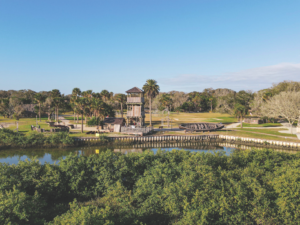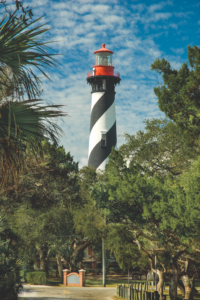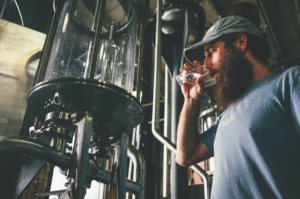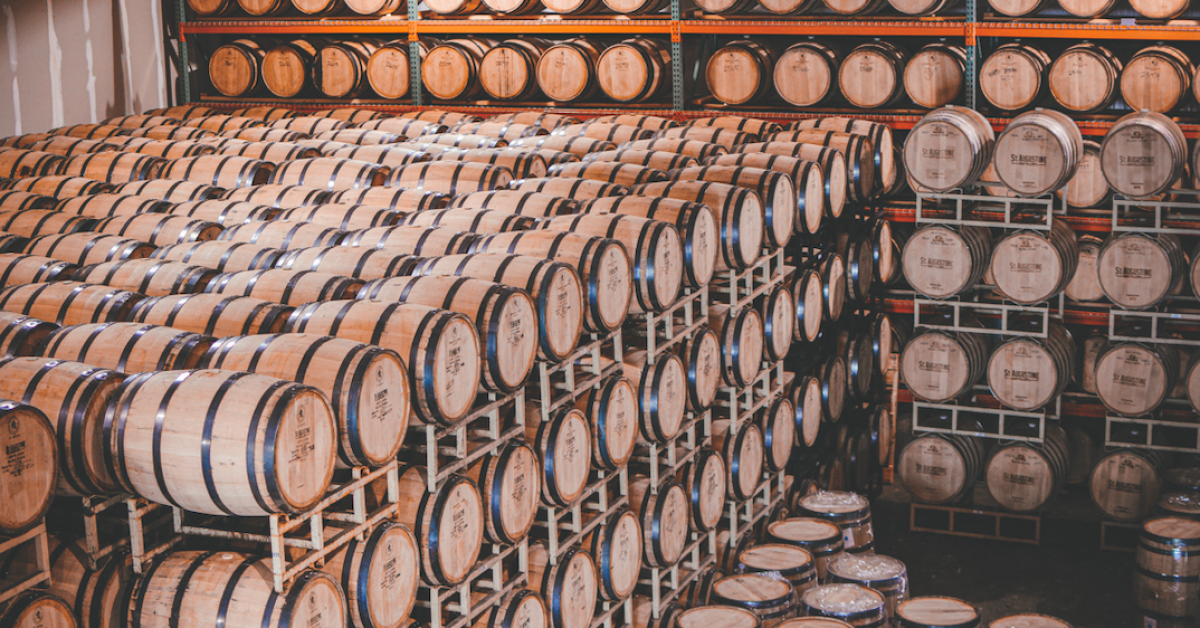More than 50 years before pilgrims landed at Plymouth Rock, the Spanish already had a foothold in North America. St. Augustine, founded in 1565, is the oldest continuously inhabited city in the United States. Today, the colonial town on Florida’s northern Atlantic Coast offers a weekend of history, exploration and fine spirits.

HISTORICAL SITES: Places of interest in St. Augustine include Ponce de Leon’s Fountain of Youth Archaeological Park and the St. Augustine Lighthouse.
TAKE A TOUR
The Castillo de San Marcos (1 South Castillo Drive, St. Augustine; 904.829.6506; nps.gov), now a national monument, is perhaps St. Augustine’s most emblematic feature. Built by the Spanish in the 17th century to defend their claim on Florida as well as their Atlantic trade routes, it’s the oldest masonry fort in the continental United States. Over the years, the Castillo has seen its share of sieges and hurricanes, and today the star-shaped fort offers ranger-led tours and self-guided walks.
 St. Augustine’s Colonial Quarter (St. George Street, St. Augustine; 888.991.0933; colonialquarter.com) provides a nuts-and-bolts look into the colonial experience of the settlement’s early days. Don’t miss the quarter’s blacksmith, dressed in period costume and working at his forge, as well as the colonial-era marksman who gives demonstrations on a replica 17th-century musket. The quarter is filled with shops, restaurants and old buildings.
St. Augustine’s Colonial Quarter (St. George Street, St. Augustine; 888.991.0933; colonialquarter.com) provides a nuts-and-bolts look into the colonial experience of the settlement’s early days. Don’t miss the quarter’s blacksmith, dressed in period costume and working at his forge, as well as the colonial-era marksman who gives demonstrations on a replica 17th-century musket. The quarter is filled with shops, restaurants and old buildings.
For more recent history, the St. Augustine Lighthouse (100 Red Cox Drive, St. Augustine; staugustinelighthouse.org) offers sweeping views of the city and the coast. Completed in 1874, the lighthouse is famous for its swirling black-and-white design. Visitors can climb its 219 steps during the day or opt for one of the off-hour tours—a sunset climb with champagne and hors d’oeuvres at the top or a nighttime ghost tour that lets visitors explore the tower after dark.

AGED SPIRITS: The St. Augustine Distillery, built inside a former ice plant, offers free tours of its stills and barrel rooms. The distillery is known for its port-finished bourbon.
TAKE A DRINK
Fifty years before Pedro Menendez de Aviles founded St. Augustine, Spanish conquistador Juan Ponce de Leon was also exploring the Sunshine State. Though the Spanish famously came to the new world looking for gold, God and glory, Ponce de Leon had his own agenda: the Fountain of Youth, a mythical spring said to grant eternal life to whoever drank from its waters. Ponce de Leon must have thought he struck paydirt when he came across the aquifer-fed spring now housed inside Ponce de Leon’s Fountain of Youth Archaeological Park (11 Magnolia Ave., St. Augustine; 904.829.3168; fountainofyouthflorida.com). Although the spring apparently doesn’t confer eternal life—Ponce de Leon died from an arrow wound during a battle with the Calusa— visitors to the park can still sip the famous spring water.
More modern libations may not guarantee eternal youth, but they do promise a good time. The St. Augustine Distillery (112 Riberia St., St. Augustine; 904.825.4962; stagustinedistillery.com), set inside a former ice plant, offers free tours of its stills and barrel rooms. The award-winning distillery is known for its port-finished bourbon, Florida cane vodka and pot-distilled rum with notes of black tea and anise. After the tour, be sure to stay for a free tasting.





